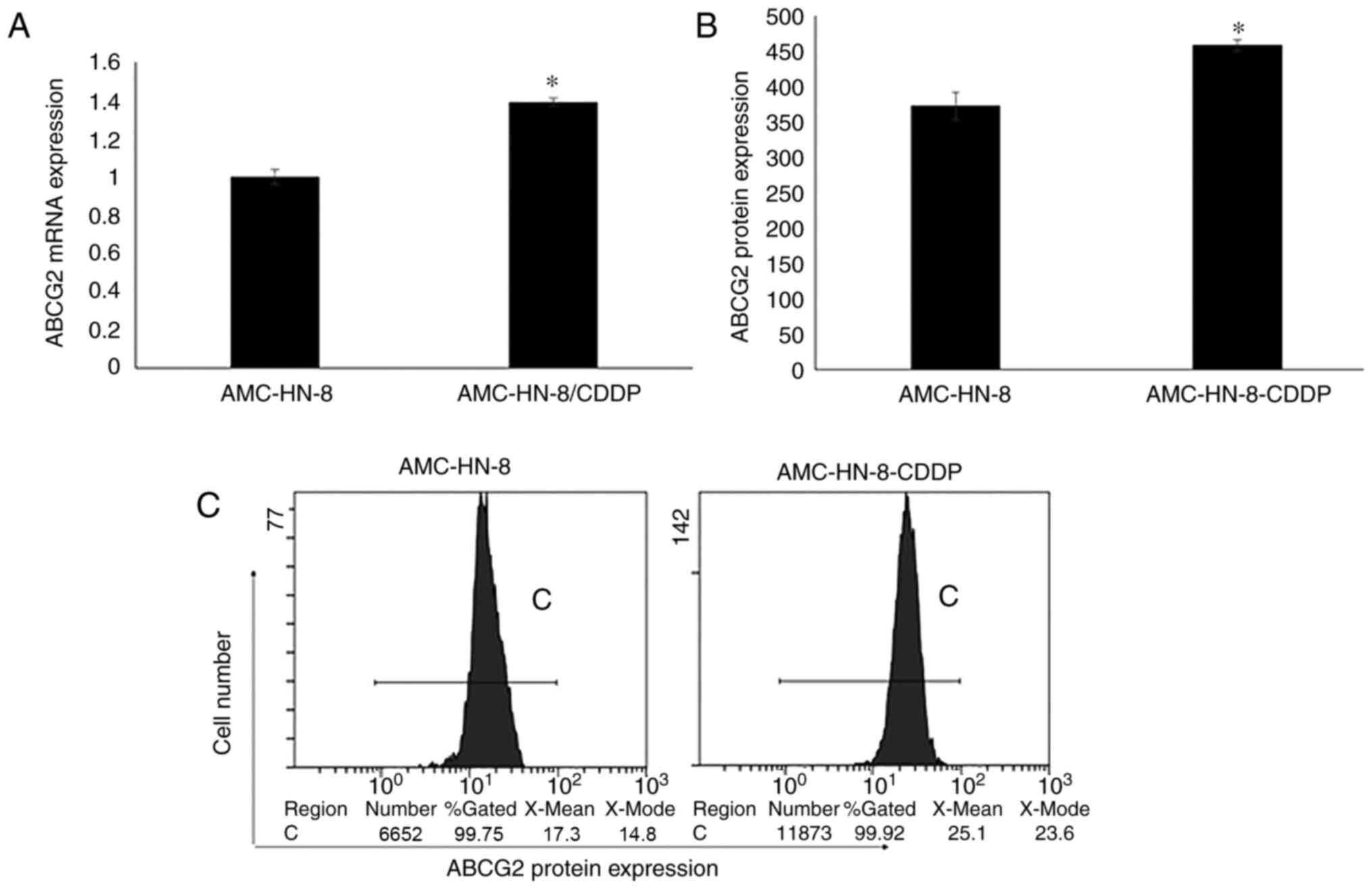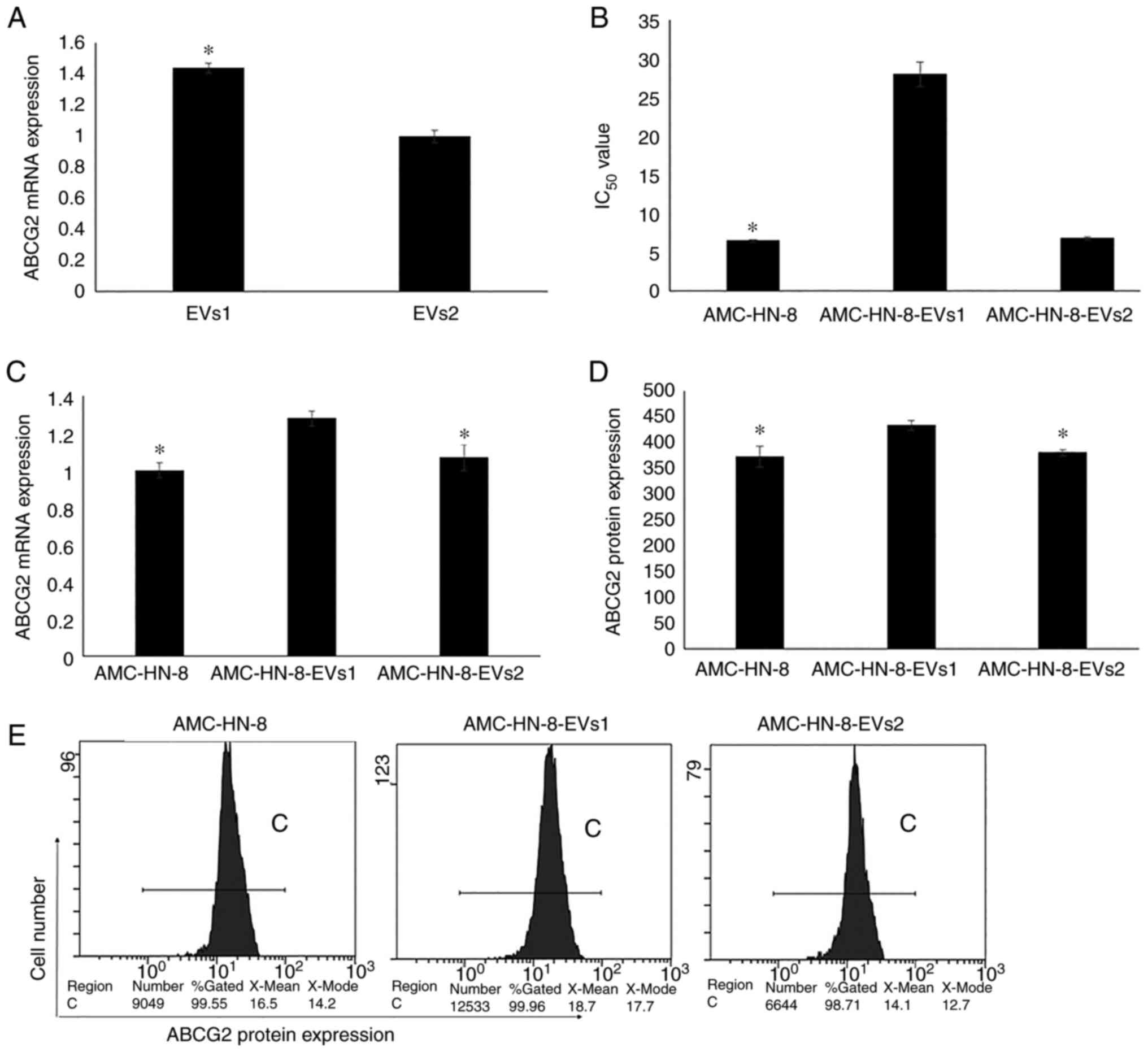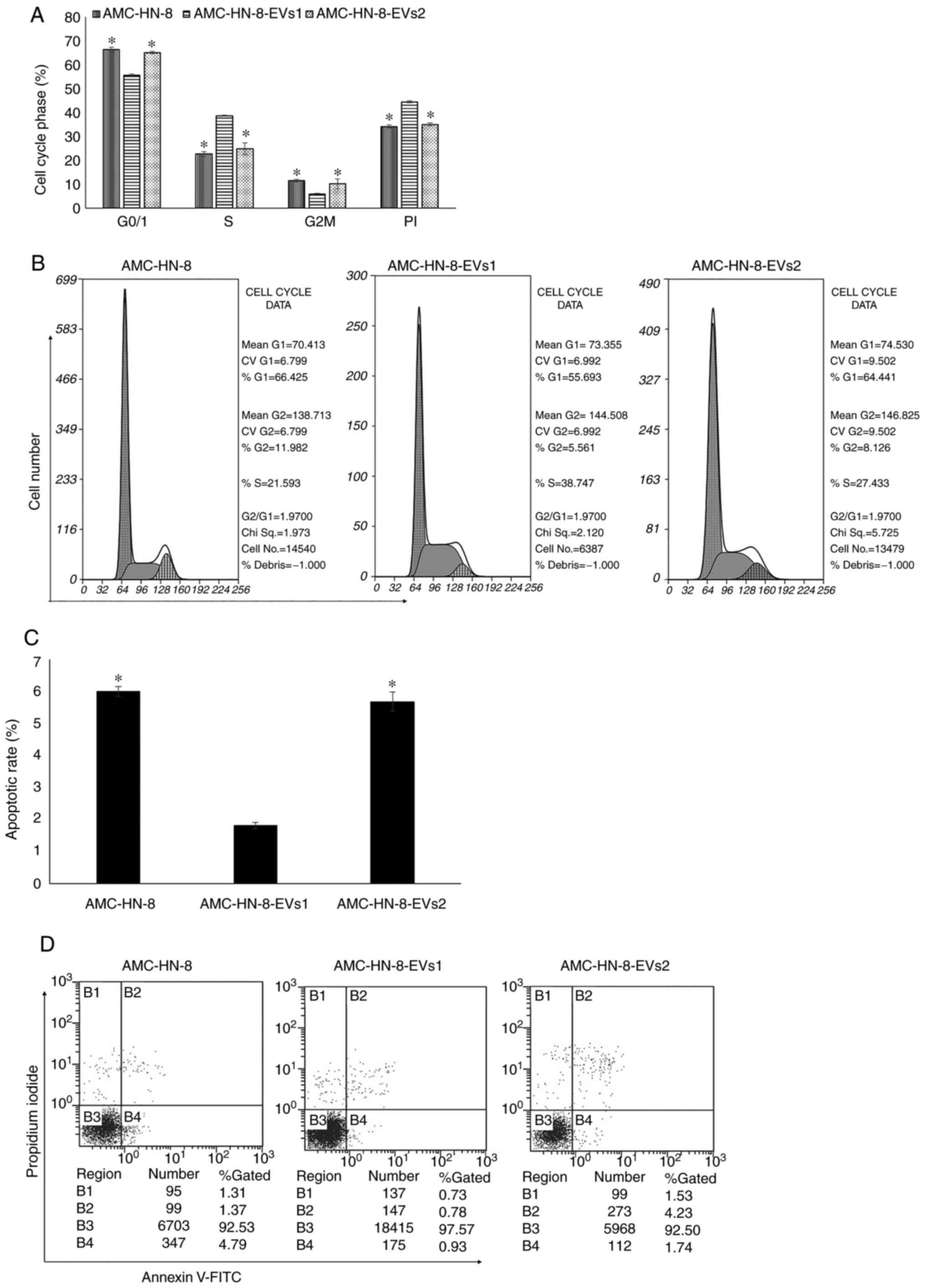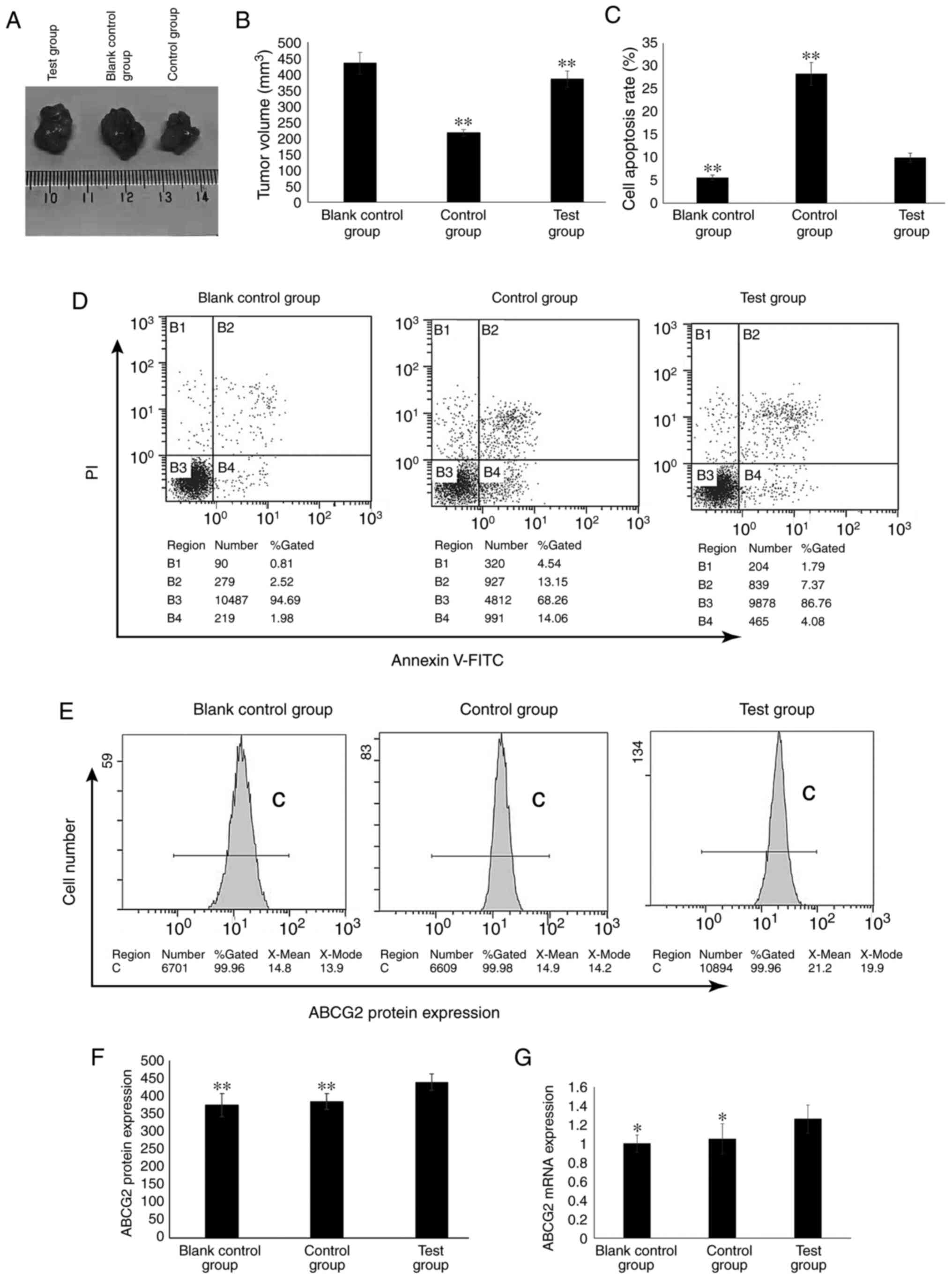|
1
|
He Y, Liang D, Li D, Shan B, Zheng R,
Zhang S, Wei W and He J: Incidence and mortality of laryngeal
cancer in China, 2015. Chin J Cancer Res. 32:10–17. 2020.
View Article : Google Scholar : PubMed/NCBI
|
|
2
|
Tang D, Tao L, Zhou L, Zhang M, Wu H, Li
X, Chen X, Li C, Xie M and Cheng L: Retrospective analysis of 659
laryngeal squamous cell carcinoma patients treated with open
laryngeal function-preserving operations. Acta Otolaryngol.
138:1043–1050. 2018. View Article : Google Scholar : PubMed/NCBI
|
|
3
|
Zhou J, Zhou L, Tao L, Zhang M, Wu H, Chen
X, Li X, Li C and Gong H: Oncological outcomes of surgical
treatment for T3 supraglottic laryngeal squamous cell carcinoma
patients. Acta Otolaryngol. 138:1028–1034. 2018. View Article : Google Scholar : PubMed/NCBI
|
|
4
|
Adeel M, Faisal M, Rashid A, Rasheed S,
Hussain R, Malik KI, Hameed MY and Jamshed A: Outcomes of
definitive radiotherapy for early laryngeal cancer in terms of
survival and patterns of failure. J Laryngol Otol. 133:1087–1091.
2019. View Article : Google Scholar : PubMed/NCBI
|
|
5
|
Ozdemir Y and Topkan E: Second primary
malignancies in laryngeal carcinoma patients treated with
definitive radiotherapy. Indian J Cancer. 56:29–34. 2019.
View Article : Google Scholar : PubMed/NCBI
|
|
6
|
Hsieh CH, Lin CY, Hsu CL, Fan KH, Huang
SF, Liao CT, Lee LY, Ng SK, Yen TC, Chang JT, et al: Incorporation
of Astragalus polysaccharides injection during concurrent
chemoradiotherapy in advanced pharyngeal or laryngeal squamous cell
carcinoma: Preliminary experience of a phase II double-blind,
randomized trial. J Cancer Res Clin Oncol. 146:33–41. 2020.
View Article : Google Scholar : PubMed/NCBI
|
|
7
|
Spector ME, Rosko AJ, Swiecicki PL, Chad
Brenner J and Birkeland AC: From VA Larynx to the future of
chemoselection: Defining the role of induction chemotherapy in
larynx cancer. Oral Oncol. 86:200–205. 2018. View Article : Google Scholar : PubMed/NCBI
|
|
8
|
Zeng H, Huang Y, Chen L, Li H and Ma X:
Exploration and validation of the effects of robust co-expressed
immune-related genes on immune infiltration patterns and prognosis
in laryngeal cancer. Int Immunopharmacol. 85:1066222020. View Article : Google Scholar : PubMed/NCBI
|
|
9
|
Forastiere AA, Goepfert H, Maor M, Pajak
TF, Weber R, Morrison W, Glisson B, Trotti A, Ridge JA, Chao C, et
al: Concurrent chemotherapy and radiotherapy for organ preservation
in advanced laryngeal cancer. N Engl J Med. 349:2091–2098. 2003.
View Article : Google Scholar : PubMed/NCBI
|
|
10
|
Li R, Chen S, Zhan J, Li X, Liu W, Sheng
X, Lu Z, Zhong R, Chen L, Luo X, et al: Long noncoding RNA
FOXD2-AS1 enhances chemotherapeutic resistance of laryngeal
squamous cell carcinoma via STAT3 activation. Cell Death Dis.
11:412020. View Article : Google Scholar : PubMed/NCBI
|
|
11
|
Zhu M, Yin F, Yang L, Chen S, Chen R, Zhou
X, Jing W, Fan X, Jia R, Wang H, et al: Contribution of TIP30 to
chemoresistance in laryngeal carcinoma. Cell Death Dis.
5:e14682014. View Article : Google Scholar : PubMed/NCBI
|
|
12
|
Gottesman MM, Fojo T and Bates SE:
Multidrug resistance in cancer: Role of ATP-dependent transporters.
Nat Rev Cancer. 2:48–58. 2002. View
Article : Google Scholar : PubMed/NCBI
|
|
13
|
Feng SL, Luo HB, Cai L, Zhang J, Wang D,
Chen YJ, Zhan HX, Jiang ZH and Xie Y: Ginsenoside Rg5 overcomes
chemotherapeutic multidrug resistance mediated by ABCB1
transporter: In vitro and in vivo study. J Ginseng Res. 44:247–257.
2020. View Article : Google Scholar : PubMed/NCBI
|
|
14
|
Ke B, Wei T, Huang Y, Gong Y, Wu G, Liu J,
Chen X and Shi L: Interleukin-7 Resensitizes Non-Small-Cell Lung
Cancer to Cisplatin via Inhibition of ABCG2. Mediators Inflamm.
2019:72414182019. View Article : Google Scholar : PubMed/NCBI
|
|
15
|
Sinha BK, Perera L and Cannon RE: Reversal
of drug resistance by JS-K and nitric oxide in ABCB1- and
ABCG2-expressing multi-drug resistant human tumor cells. Biomed
Pharmacother. 120:1094682019. View Article : Google Scholar : PubMed/NCBI
|
|
16
|
Xie ZY, Wang FF, Xiao ZH, Liu SF, Tang SL
and Lai YL: Overexpressing microRNA-34a overcomes ABCG2-mediated
drug resistance to 5-FU in side population cells from colon cancer
via suppressing DLL1. J Biochem. 167:557–564. 2020. View Article : Google Scholar : PubMed/NCBI
|
|
17
|
Liu L, Zuo LF and Guo JW: ABCG2 gene
amplification and expression in esophageal cancer cells with
acquired adriamycin resistance. Mol Med Rep. 9:1299–1304. 2014.
View Article : Google Scholar : PubMed/NCBI
|
|
18
|
Wang L, Liu L, Chen Y, Du Y, Wang J and
Liu J: Correlation between adenosine triphosphate (ATP)-binding
cassette transporter G2 (ABCG2) and drug resistance of esophageal
cancer and reversal of drug resistance by artesunate. Pathol Res
Pract. 214:1467–1473. 2018. View Article : Google Scholar : PubMed/NCBI
|
|
19
|
He M, Wu H, Jiang Q, Liu Y, Han L, Yan Y,
Wei B, Liu F, Deng X, Chen H, et al: Hypoxia-inducible factor-2α
directly promotes BCRP expression and mediates the resistance of
ovarian cancer stem cells to adriamycin. Mol Oncol. 13:403–421.
2019. View Article : Google Scholar : PubMed/NCBI
|
|
20
|
Kim CK, Oh S, Kim SJ, Leem SH, Heo J and
Chung SH: Correlation of IGF1R expression with ABCG2 and CD44
expressions in human osteosarcoma. Genes Genomics. 40:381–388.
2018. View Article : Google Scholar : PubMed/NCBI
|
|
21
|
Liang YL, Wu CH, Kang CY, Lin CN, Shih NY,
Lin SH, Chen YC and Hsu KF: Downregulated Salt-inducible Kinase 3
Expression Promotes Chemoresistance in Serous Ovarian Cancer via
the ATP-binding Cassette Protein ABCG2. J Cancer. 10:6025–6036.
2019. View Article : Google Scholar : PubMed/NCBI
|
|
22
|
Das S, Mukherjee P, Chatterjee R, Jamal Z
and Chatterji U: Enhancing Chemosensitivity of Breast Cancer Stem
Cells by Downregulating SOX2 and ABCG2 Using
Wedelolactone-encapsulated Nanoparticles. Mol Cancer Ther.
18:680–692. 2019. View Article : Google Scholar : PubMed/NCBI
|
|
23
|
Shen B, Dong P, Li D and Gao S: Expression
and function of ABCG2 in head and neck squamous cell carcinoma and
cell lines. Exp Ther Med. 2:1151–1157. 2011. View Article : Google Scholar : PubMed/NCBI
|
|
24
|
Denton AE, Roberts EW and Fearon DT:
Stromal Cells in the Tumor Microenvironment. Adv Exp Med Biol.
1060:99–114. 2018. View Article : Google Scholar : PubMed/NCBI
|
|
25
|
Wu T and Dai Y: Tumor microenvironment and
therapeutic response. Cancer Lett. 387:61–68. 2017. View Article : Google Scholar : PubMed/NCBI
|
|
26
|
Akhtar M, Haider A, Rashid S and Al-Nabet
ADMH: Paget's ‘Seed and Soil’ Theory of Cancer Metastasis: An Idea
Whose Time has Come. Adv Anat Pathol. 26:69–74. 2019. View Article : Google Scholar : PubMed/NCBI
|
|
27
|
Hayashida T, Jinno H and Kitagawa Y:
Epithelial-mesenchymal transition and tumor microenvironment
propose the seed and soil theory of the present age. Nihon Rinsho.
70 (Suppl 7):203–207. 2012.(In Japanese). PubMed/NCBI
|
|
28
|
Mulcahy LA, Pink RC and Carter DR: Routes
and mechanisms of extracellular vesicle uptake. J Extracell
Vesicles. Aug 4–2014.doi: 10.3402/jev.v3.24641. View Article : Google Scholar : PubMed/NCBI
|
|
29
|
Haraszti RA, Didiot MC, Sapp E, Leszyk J,
Shaffer SA, Rockwell HE, Gao F, Narain NR, DiFiglia M, Kiebish MA,
et al: High-resolution proteomic and lipidomic analysis of exosomes
and microvesicles from different cell sources. J Extracell
Vesicles. 5:325702016. View Article : Google Scholar : PubMed/NCBI
|
|
30
|
Lawson C, Vicencio JM, Yellon DM and
Davidson SM: Microvesicles and exosomes: New players in metabolic
and cardiovascular disease. J Endocrinol. 228:R57–R71. 2016.
View Article : Google Scholar : PubMed/NCBI
|
|
31
|
Becker A, Thakur BK, Weiss JM, Kim HS,
Peinado H and Lyden D: Extracellular vesicles in cancer:
Cell-to-cell mediators of metastasis. Cancer Cell. 30:836–848.
2016. View Article : Google Scholar : PubMed/NCBI
|
|
32
|
Lindenbergh MFS and Stoorvogel W: Antigen
presentation by extracellular vesicles from professional
antigen-presenting cells. Annu Rev Immunol. 36:435–459. 2018.
View Article : Google Scholar : PubMed/NCBI
|
|
33
|
Joncas FH, Lucien F, Rouleau M, Morin F,
Leong HS, Pouliot F, Fradet Y, Gilbert C and Toren P: Plasma
extracellular vesicles as phenotypic biomarkers in prostate cancer
patients. Prostate. 79:1767–1776. 2019. View Article : Google Scholar : PubMed/NCBI
|
|
34
|
Wang Y, Dong L, Zhong H, Yang L, Li Q, Su
C, Gu W and Qian Y: Extracellular vesicles (EVs) from lung
adenocarcinoma cells promote human umbilical vein endothelial cell
(HUVEC) angiogenesis through yes kinase-associated protein (YAP)
transport. Int J Biol Sci. 15:2110–2118. 2019. View Article : Google Scholar : PubMed/NCBI
|
|
35
|
Takahashi K, Yan IK, Wood J, Haga H and
Patel T: Involvement of extracellular vesicle long noncoding RNA
(linc-VLDLR) in tumor cell responses to chemotherapy. Mol Cancer
Res. 12:1377–1387. 2014. View Article : Google Scholar : PubMed/NCBI
|
|
36
|
Zhou T, Li Y, Yang L, Liu L, Ju Y and Li
C: Silencing of ANXA3 expression by RNA interference inhibits the
proliferation and invasion of breast cancer cells. Oncol Rep.
37:388–398. 2017. View Article : Google Scholar : PubMed/NCBI
|
|
37
|
Livak KJ and Schmittgen TD: Analysis of
relative gene expression data using real-time quantitative PCR and
the 2(-Delta Delta C(T)) Method. Methods. 25:402–408. 2001.
View Article : Google Scholar : PubMed/NCBI
|
|
38
|
Leung HW, Lau EYT, Leung CON, Lei MML, Mok
EHK, Ma VWS, Cho WCS, Ng IOL, Yun JP, Cai SH, et al: NRF2/SHH
signaling cascade promotes tumor-initiating cell lineage and drug
resistance in hepatocellular carcinoma. Cancer Lett. 476:48–56.
2020. View Article : Google Scholar : PubMed/NCBI
|
|
39
|
Zhong P, Chen X, Guo R, Chen X, Chen Z,
Wei C, Li Y, Wang W, Zhou Y and Qin L: Folic acid-modified
nanoerythrocyte for codelivery of paclitaxel and tariquidar to
overcome breast cancer multidrug resistance. Mol Pharm.
17:1114–1126. 2020. View Article : Google Scholar : PubMed/NCBI
|
|
40
|
Paškevičiūtė M and Petrikaitė V:
Overcoming transporter-mediated multidrug resistance in cancer:
Failures and achievements of the last decades. Drug Deliv Transl
Res. 9:379–393. 2019. View Article : Google Scholar : PubMed/NCBI
|
|
41
|
Ganapathi RN and Ganapathi MK: Mechanisms
regulating resistance to inhibitors of topoisomerase II. Front
Pharmacol. 4:892013. View Article : Google Scholar : PubMed/NCBI
|
|
42
|
Nagraj J, Chatterjee S, Pal T, Sakpal AS,
Gota V, Ramaa CS and Ray P: A novel series of di-fluorinated
propanedione derivatives synergistically augment paclitaxel
mediated caspase 3 activation in ovarian cancer cells. J Cancer Res
Ther. 10:701–709. 2014.PubMed/NCBI
|
|
43
|
Ambjorner SEB, Wiese M, Kohler SC, Svindt
J, Lund XL, Gajhede M, Saaby L, Brodin B, Rump S, Weigt H, et al:
The pyrazolo[3,4-d]pyrimidine derivative, SCO-201, reverses
multidrug resistance mediated by ABCG2/BCRP. Cells. 9:6132020.
View Article : Google Scholar
|
|
44
|
Gao Q, Li XX, Xu YM, Zhang JZ, Rong SD,
Qin YQ and Fang J: IRE1α-targeting downregulates ABC transporters
and overcomes drug resistance of colon cancer cells. Cancer Lett.
476:67–74. 2020. View Article : Google Scholar : PubMed/NCBI
|
|
45
|
Wu CP, Lusvarghi S, Tseng PJ, Hsiao SH,
Huang YH, Hung TH and Ambudkar SV: MY-5445, a phosphodiesterase
type 5 inhibitor, resensitizes ABCG2-overexpressing
multidrug-resistant cancer cells to cytotoxic anticancer drugs. Am
J Cancer Res. 10:164–178. 2020.PubMed/NCBI
|
|
46
|
Hofman J, Sorf A, Vagiannis D, Sucha S,
Kammerer S, Küpper JH, Chen S, Guo L, Ceckova M and Staud F:
Brivanib exhibits potential for pharmacokinetic drug-drug
interactions and the modulation of multidrug resistance through the
inhibition of human ABCG2 drug efflux transporter and CYP450
biotransformation enzymes. Mol Pharm. 16:4436–4450. 2019.
View Article : Google Scholar : PubMed/NCBI
|
|
47
|
Bhardwaj B, Baidya ATK, Amin SA, Adhikari
N, Jha T and Gayen S: Insight into structural features of
phenyltetrazole derivatives as ABCG2 inhibitors for the treatment
of multidrug resistance in cancer. SAR QSAR Environ Res.
30:457–475. 2019. View Article : Google Scholar : PubMed/NCBI
|
|
48
|
Zhang YK, Wang YJ, Lei ZN, Zhang GN, Zhang
XY, Wang DS, Al-Rihani SB, Shukla S, Ambudkar SV, Kaddoumi A, et
al: Regorafenib antagonizes BCRP-mediated multidrug resistance in
colon cancer. Cancer Lett. 442:104–112. 2019. View Article : Google Scholar : PubMed/NCBI
|
|
49
|
Bar-Zeev M, Kelmansky D, Assaraf YG and
Livney YD: β-Casein micelles for oral delivery of SN-38 and
elacridar to overcome BCRP-mediated multidrug resistance in gastric
cancer. Eur J Pharm Biopharm. 133:240–249. 2018. View Article : Google Scholar : PubMed/NCBI
|
|
50
|
Ge C, Wang F, Cui C, Su X, To KKW, Wang X,
Zhang H, Song X and Fu L: PCI29732, a Bruton's tyrosine kinase
inhibitor, enhanced the efficacy of conventional chemotherapeutic
agents in ABCG2-overexpressing cancer cells. Cell Physiol Biochem.
48:2302–2317. 2018. View Article : Google Scholar : PubMed/NCBI
|
|
51
|
Baxter DE, Kim B, Hanby AM, Verghese ET,
Sims AH and Hughes TA: Neoadjuvant endocrine therapy in breast
cancer upregulates the cytotoxic drug pump ABCG2/BCRP, and may lead
to resistance to subsequent chemotherapy. Clin Breast Cancer.
18:481–488. 2018. View Article : Google Scholar : PubMed/NCBI
|
|
52
|
Tkach M and Théry C: Communication by
extracellular vesicles: Where we are and where we need to go. Cell.
164:1226–1232. 2016. View Article : Google Scholar : PubMed/NCBI
|
|
53
|
Han L, Lam EW and Sun Y: Extracellular
vesicles in the tumor microenvironment: Old stories, but new tales.
Mol Cancer. 18:592019. View Article : Google Scholar : PubMed/NCBI
|
|
54
|
Yousafzai NA, Wang H, Wang Z, Zhu Y, Zhu
L, Jin H and Wang X: Exosome mediated multidrug resistance in
cancer. Am J Cancer Res. 8:2210–2226. 2018.PubMed/NCBI
|
|
55
|
Wang X, Qiao D, Chen L, Xu M, Chen S,
Huang L, Wang F, Chen Z, Cai J and Fu L: Chemotherapeutic drugs
stimulate the release and recycling of extracellular vesicles to
assist cancer cells in developing an urgent chemoresistance. Mol
Cancer. 18:1822019. View Article : Google Scholar : PubMed/NCBI
|
|
56
|
Bouvy C, Wannez A, Laloy J, Chatelain C
and Dogné JM: Transfer of multidrug resistance among acute myeloid
leukemia cells via extracellular vesicles and their microRNA cargo.
Leuk Res. 62:70–76. 2017. View Article : Google Scholar : PubMed/NCBI
|
|
57
|
Soekmadji C and Nelson CC: The emerging
role of extracellular vesicle-mediated drug resistance in cancers:
Implications in advanced prostate cancer. BioMed Res Int.
2015:4548372015. View Article : Google Scholar : PubMed/NCBI
|
|
58
|
Ma X, Chen Z, Hua D, He D, Wang L, Zhang
P, Wang J, Cai Y, Gao C, Zhang X, et al: Essential role for
TrpC5-containing extracellular vesicles in breast cancer with
chemotherapeutic resistance. Proc Natl Acad Sci USA. 111:6389–6394.
2014. View Article : Google Scholar : PubMed/NCBI
|
|
59
|
Chen Y, Liu L, Li J, Du Y, Wang J and Liu
J: Effects of long noncoding RNA (linc-VLDLR) existing in
extracellular vesicles on the occurrence and multidrug resistance
of esophageal cancer cells. Pathol Res Pract. 215:470–477. 2019.
View Article : Google Scholar : PubMed/NCBI
|


















